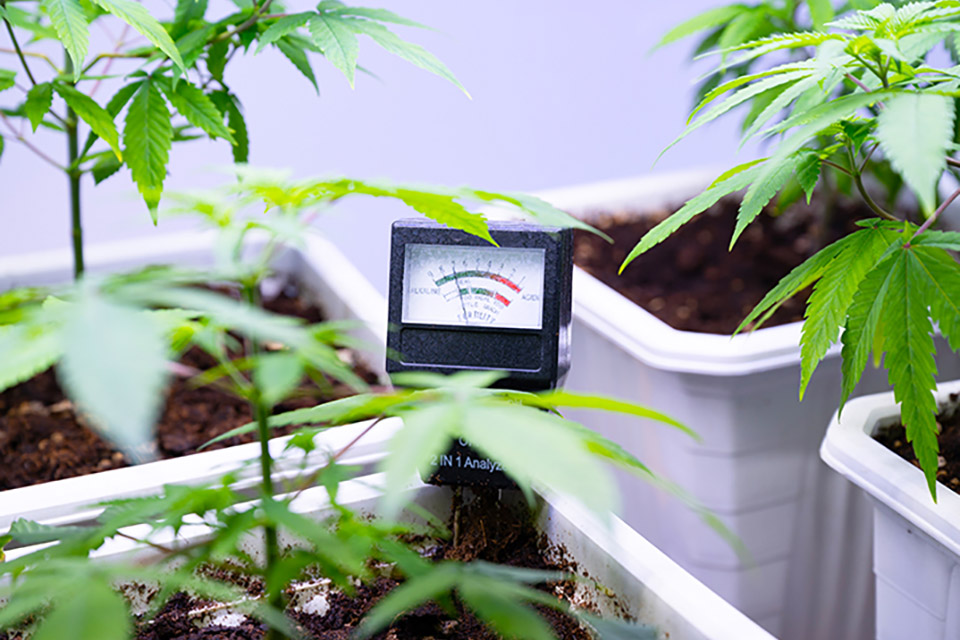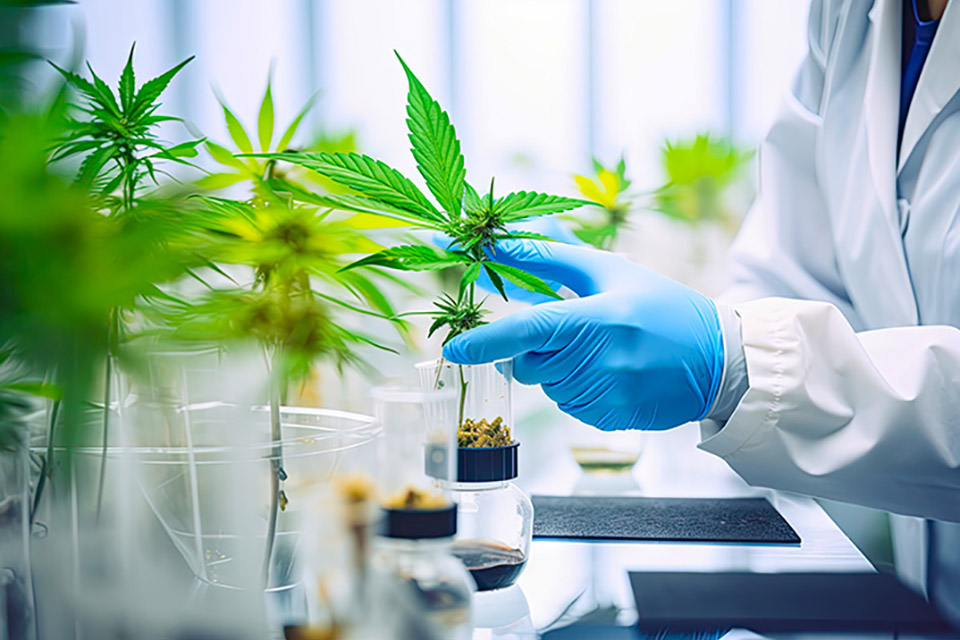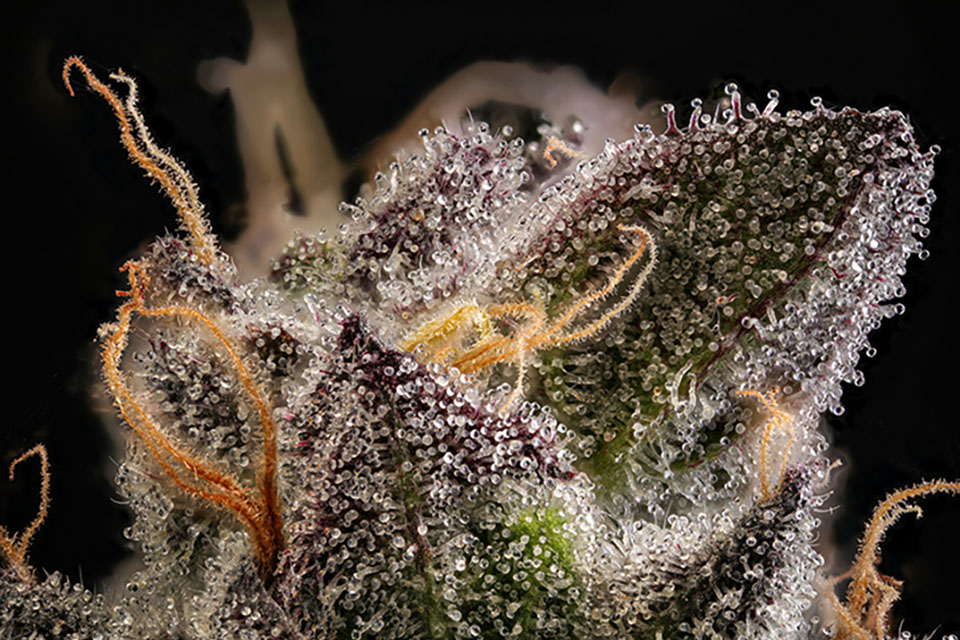
As a home grower in the USA, knowing how calcium impacts the growth of cannabis plants is key to achieving optimal harvests. Growers should understand the importance of calcium for cannabis growth, the signs and effects of calcium deficiency, sources of calcium for cannabis plants, and methods for ensuring proper calcium levels in soil or growing medium. By addressing calcium needs, you can promote healthy growth and higher yields in your cannabis plants.
Symptoms and Effects of Calcium Deficiency in Cannabis Plants
Calcium plays a multifaceted role in cannabis plant growth. It aids in the formation of cell walls, supports nutrient transportation, and affects the plant’s overall growth and development. Therefore, calcium deficiency can lead to a myriad of problems.
Leaf Symptoms
One of the earliest indicators of calcium deficiency in cannabis plants occurs in the foliage. The leaves may begin to display dark spots or necrosis around the edges. The leaf tips may also show signs of curling downward, a symptom known as “clawing.”
Impact on Plant Growth and Yield
Calcium deficiency doesn’t just alter the appearance of cannabis plants, but it significantly affects their growth and yield as well. Plants suffering from a lack of calcium may become stunted or show compromised structural integrity, leading to weak stems and branches. The impact on the plant’s strength and resilience can lead to decreased yields and, in severe cases, plant death.
Calcium deficiency can also affect the quality of the final product. Cannabis flowers may become underdeveloped or show signs of “blossom end rot,” a condition predominantly related to calcium insufficiency.
By understanding the symptoms and effects of calcium deficiency, growers can quickly act to rectify the issue, ensuring their cannabis plants remain healthy and that they achieve the desired yield and product quality.
Sources of Calcium for Cannabis Plants
If we consider the symbiotic relationship between calcium and cannabis plants, we must identify reliable sources of calcium to support healthy plant growth. Two primary sources to consider are natural sources found in your soil and commercial products designed to supplement the plant’s calcium intake.
Organic Amendments
Organic amendments are a great way to introduce calcium into your cannabis plants naturally. You can blend composting materials like eggshells, oyster shells, and bone meal that are rich in calcium into your garden soil. These not only supply the needed calcium but also enrich the soil with other beneficial nutrients.
Calcium-Rich Soils
Certain types of soil naturally contain high levels of calcium. Sandy soils, clay soils, and chalky soils are all inherently rich in calcium, making them ideal for cultivating cannabis plants. However, you should check the nutrient balance of any soil type to ensure it’s also compatible with the other nutritional needs of your cannabis plants.
Commercial Supplements
Commercial calcium supplements for cannabis are an easy and effective method to boost calcium levels in your plants. Available in either liquid or granulated form, you can incorporate these supplements into your regular feeding schedule. Be sure to follow the manufacturer’s instructions to avoid over-application, which could lead to nutrient imbalances.
Hydroponic Nutrient Solutions
For those managing hydroponic systems, nutrient solutions that cater to a plant’s calcium needs are plentiful. These solutions typically contain calcium, amongst other essential nutrients, and you can mix them with your system’s water.
Ensuring Proper Calcium Levels in Soil or Growing Medium
One of the most crucial aspects of maintaining the health of your cannabis plants is ensuring the right calcium levels in your soil or growing medium.
Testing and Adjusting Soil pH
A critical first step is to test the pH level of your soil or growing medium. If the pH is too high or too low, it can impact the plant’s ability to absorb calcium, regardless of how much calcium is in the soil. Most cannabis plants prefer a slightly acidic soil pH between 6 and 7. If the soil pH is off, you can adjust it using pH up or down products from a garden supply store. Another option is to add lime to increase pH or sulfur to decrease it.
Calcium Application Methods
Once you adjust your soil pH and are sure of its calcium content, you can apply calcium to your cannabis plants as needed. There are two primary methods for this: foliar sprays and soil amendments.
Foliar Sprays
Foliar spraying is a method where you apply nutrients, including calcium, directly to the plant’s leaves. This method may provide a quick fix for minor deficiencies as it allows the plant to absorb nutrients immediately. However, foliar sprays are not a substitute for proper soil nutrient management because they don’t address the root problem—calcium content in the soil.
Soil Amendments
For a longer-lasting solution, you should add calcium directly to the soil or growing medium. You can do this using the organic amendments and commercial supplements mentioned earlier. These amendments not only raise calcium levels but can also improve the overall soil structure and nutrient balance, creating a more hospitable environment for your cannabis plants.
Calcium Is Vital for Healthy Cannabis
When a home grower understands and addresses the complexities of calcium and cannabis plants, they can outdo themselves in cultivating high-yielding, healthy cannabis plants. It may require a bit of extra work to ensure adequate calcium levels, but the rewards in terms of plant health and yield far exceed the effort.



